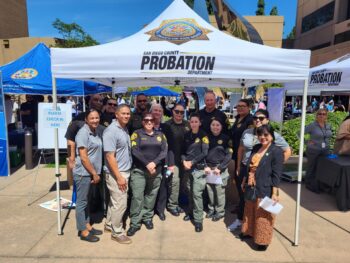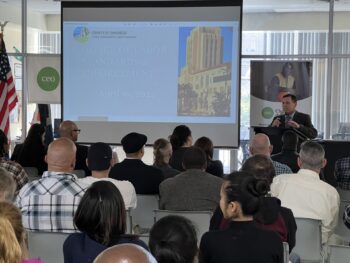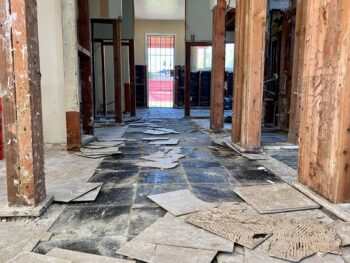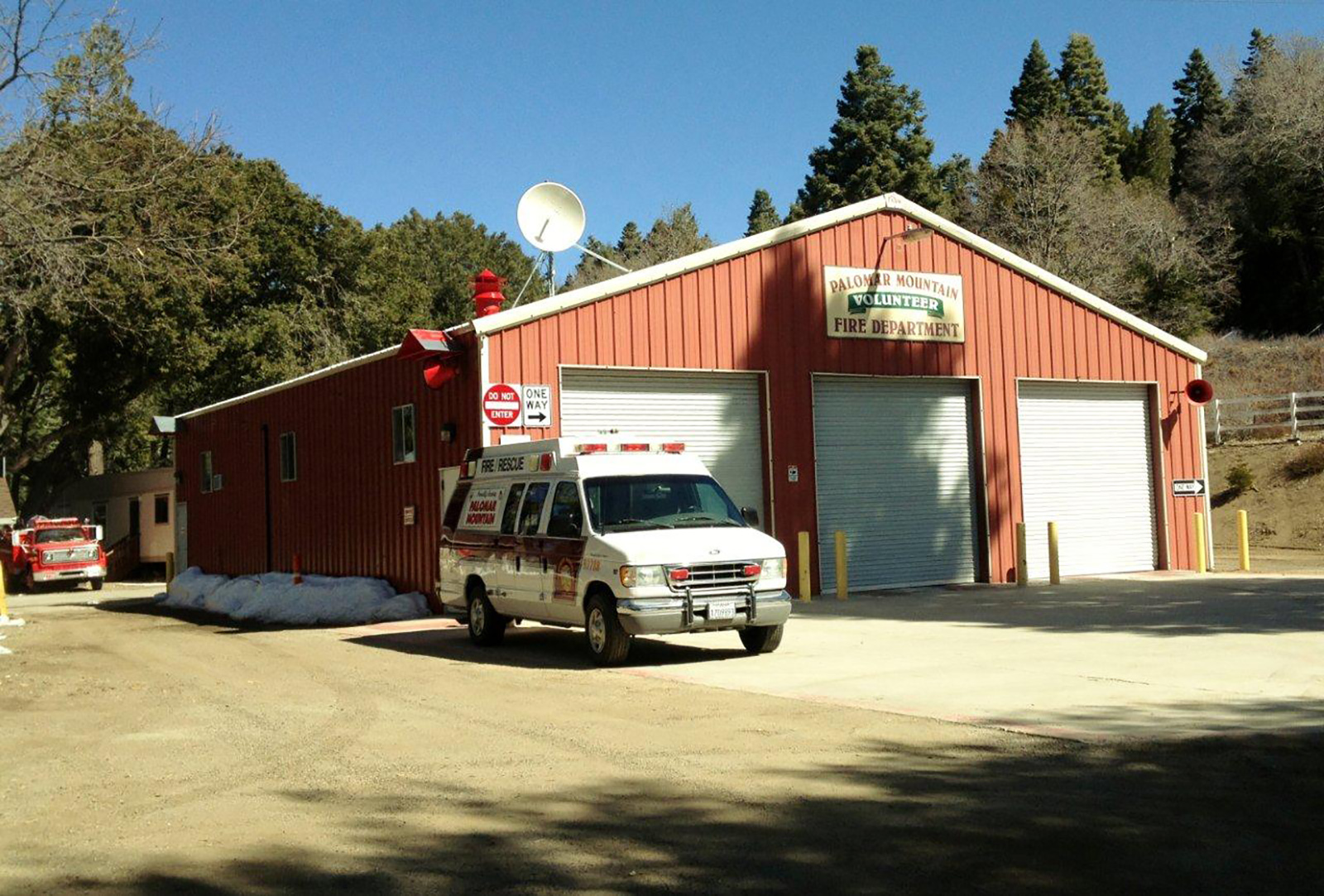A fourth grade class got a lesson we can all learn from about San Diego’s risk for a tsunami and what to do in the event of a warning or a significant earthquake when at, or near, the coastline.
A local meteorologist, a geologist and state and County officials visited the students at Cabrillo Elementary in Point Loma and explained what you do is move to higher ground that is at least 100 feet in elevation, or go a mile inland. Then wait for official information saying it is safe to return.
The San Diego County Office of Emergency Services coordinated the presentation last Friday in advance of Tsunami Preparedness Week.
“The purpose of today was to teach the kids about tsunamis in a fun way, so that they understand the threat and how to stay safe,” said Mike Davis, a senior emergency services coordinator for the County.
The County recommends that all San Diegans who live near or visit the region’s 70 miles of coastline review San Diego tsunami zone maps and plan what they’ll do in the event of a tsunami warning.

“We use science to help kids understand what tsunamis are,” said Cindy Pridmore, engineering geologist with the California Geological Survey. “Very dangerous tsunamis, devastating ones, are very rare. So, we just let kids know that if there’s a tsunami warning and they’re told to stay away from the water, the only danger is if they don’t stay away from the water.”
Anna Gonzales, 9, said she loves learning about new things and that morning she’d read an article in class about a devastating tsunami in Japan. She said she was fascinated that a tsunami could last for hours, days or longer.
“So, if you see a see a beach and there’s no water out, you should actually move away for high ground,” Gonzales said. “Tsunamis are something you should be concerned about, but it doesn’t really happen as much. It rarely happens here, but it can happen here because we’re right next to the beach.”
A Chilean earthquake in 2010 and a Japanese earthquake in 2011 both generated tsunamis in San Diego. The latter caused thousands of dollars of damage mostly to the boating community.
Yvette LaDuke with the California Office of Emergency Services said the big message to the students once they understand what causes a tsunami and what they need to do, is to emphasize readiness. Students can help their parents create an emergency plan and learn where to go to get further resources.
Meteorologist Alex Tardy works at the National Weather Service San Diego office, which would issue any warnings in the event of a tsunami either through a television emergency alert or a wireless emergency alert to cell phones with instruction on what to do. On Friday, he gave teacher Dan Cooperman a weather radio for his classroom.

“The idea is you leave it plugged in and when something bad happens, it’ll let you know,” Tardy said. “Then you just go to a little higher ground and you’ll be OK because we’re not expecting giant waves.”
Three table displays were set up along the water near Yacht Harbor for Tsunami Preparedness Week with the experts on hand to explain the displays and answer questions. Twenty-five students rotated among the tables and took away tsunami and preparedness posters and information pamphlets to discuss with parents later. The children also played with two small containers modeling tsunami wave action. Afterward, the students were asked to demonstrate what they would do if they felt an earthquake and they headed inland walking back to school.
Jayden Joseph, 10, said, he plans to show his mother all the information he picked up off the tables about tsunami preparedness.
“If there is a tsunami, get to high ground. Right behind the school is a hill we can probably run up it,” he said.
In a real warning situation, the entire school would walk further inland from their campus which is located near a Tsunami Inundation Zone.
Learn about general emergency preparedness information at ReadySanDiego.org.






